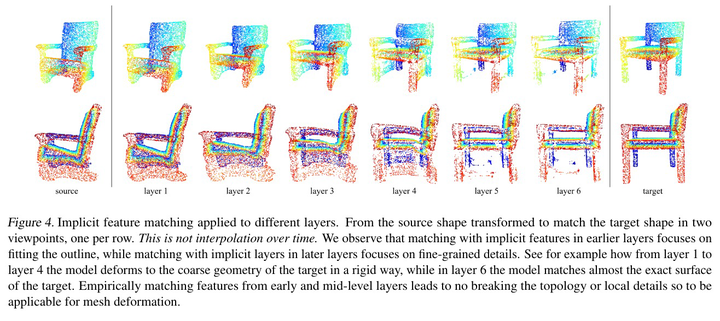Neural Feature Matching in Implicit 3D Representations

Abstract
Recently, neural implicit functions have achieved impressive results for encoding 3D shapes. Conditioning on low-dimensional latent codes generalises a single implicit function to learn shared representation space for a variety of shapes, with the advantage of smooth interpolation. While the benefits from the global latent space do not correspond to explicit points at local level, we propose to track the continuous point trajectory by matching implicit features with the latent code interpolating between shapes, from which we corroborate the hierarchical functionality of the deep implicit functions, where early layers map the latent code to fitting the coarse shape structure, and deeper layers further refine the shape details. Furthermore, the structured representation space of implicit functions enables to apply feature matching for shape deformation, with the benefits to handle topology and semantics inconsistency, such as from an armchair to a chair with no arms, without explicit flow functions or manual annotations.